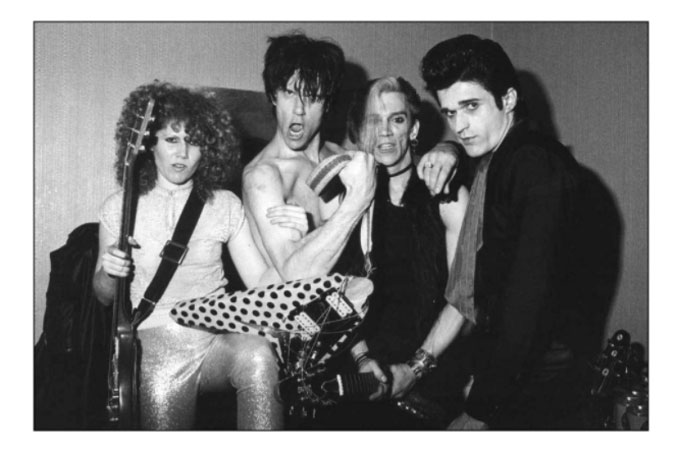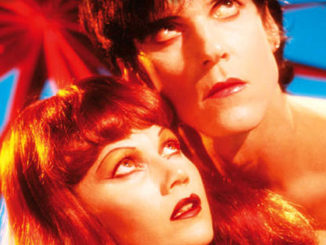
It was rewarding to revive the familiarity with The Cramps through Dick Porter’s book Journey to the Centre of the Cramps [Omnibus Press, 2015; review here]. Reading this book alerted a train of associations that brought back memories from the times when my admiration for the group was ambivalent. Maybe you will recognize yourself in such a situation where you are caught between bewilderment and hesitation towards a group concept that is totally new for you.
I first encountered The Cramps in the summer of 1979 in London when they warmed up for the main attraction, The Police; a band that was sky-rocketing in popularity at the time. I attended the concert at the Lyceum Ballroom more or less unprepared, without knowing very much of The Cramps beforehand. Thus, I was then totally unaware of the connection between the two bands on stage that night. I did not know that Miles Copeland both managed The Police (in which his brother Stewart played drums) and founded the record companies that (re)issued The Cramps’ first records; Illegal Records (founded in 1977) in the UK, and International Record Syndicate (1979) in the US.

June 1979 was an interesting time period for The Cramps. The Gravest Hits EP was released that month, giving the European audience easier access to their two first Vengeance-singles, with a cover version of Ricky Nelson’s Lonesome Town as bonus track. The Cramps was in Manchester some weeks before the Lyceum gig, which prompted the Mancunian Steven Morrissey to write favorably about them in letters that were published in Sounds and New Musical Express. Morrissey’s fascination resulted in that he and Lindsay Hutton shortly thereafter formed the Legion of the Cramped – a fan club that communicated with its fans through the zine Rockin’ Bones. The Legion was in operation for a few years until The Cramps asked them to close down. But Morrissey’s relation did not end – shown by his unbridled accolade in Record Mirror (1980) and his sign of respect to Lux Interior at the end of Something Is Squeezing My Skull on the Jimmy Kimmel Show in 2009, the day after The Cramps’ singers demise.

I was apparently not ready yet to be carried away. In fact, conviction of The Cramps’ greatness did not appear crystal clear even after the Gravest Hits EP had spun frequently at the turntable later that year. It was mainly the five minutes plus cover of The Trashmen’s Surfin’ Bird that added to my reluctance. (Still, I think such exaggerated version fits better at the very end of a live set rather than as a studio record track.)
It was, a little bit shamefully, not until their well-balanced and carefully styled first album, the classical Songs The Lord Taught Us, was released in 1980 the penny really dropped for me. After that, there were no turning back. For one thing, that album started me investigating the originals to all their covers – or, in some cases, blatant borrowings, long before the Born Bad (Song that The Cramps learned us) volumes put those things in place. This search for the originals opened doors to obscure rockabilly, little-known instrumentals and seldom heard ‘60s garage bands, which together forms a stable tripod to build further wide-ranging music curiosity on.

I really wish I could have joined Lux and Poison during their vacuum cleaning of record bins in the ‘70s described in Journey to the Centre of the Cramps during a time before these treasures got impossible to get hold of (for us non-millionaires).
Cross-sectional Cramps playlist 1978–2003
Human Fly [1978]
TV Set [1980]
The Natives Are Restless [1981]
You Got Good Taste [1983]
People Ain’t No Good [1986]
All Women Are Bad [1990]
Eyeball In My Martini [1991]
Ultra Twist [1994]
Like A Bad Girl Should [1997]
Big Black Witchcraft Rock [2003]



Be the first to comment